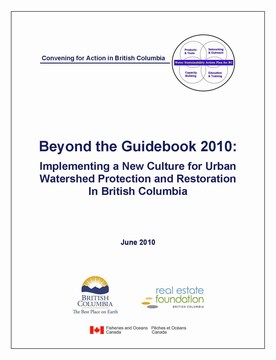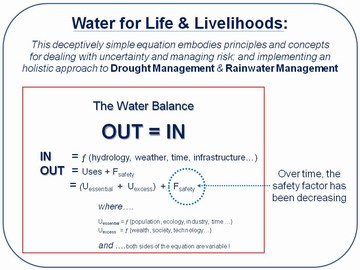‘Convening for Action in British Columbia’ – a provincial initiative to advance water-centric planning

Water Sustainability Action Plan
Released in February 2004, the Water Sustainability Action Plan for British Columbia is about implementation – in particular, showcasing what local government implementers are doing on the ground to effect changes in land development, infrastructure servicing and water use practices.
 In 2005, the Action Plan partners launched a ‘made in BC’ process known as Convening for Action. “When we gather, it is for a purpose. There must be an action item or an outcome. Our aim is to move from talk to action by developing tools, providing training, and building capacity,” states Kim Stephens, Action Plan Program Coordinator.
In 2005, the Action Plan partners launched a ‘made in BC’ process known as Convening for Action. “When we gather, it is for a purpose. There must be an action item or an outcome. Our aim is to move from talk to action by developing tools, providing training, and building capacity,” states Kim Stephens, Action Plan Program Coordinator.
Beyond the Guidebook 2010
“In 2005, the founding partners envisioned a series of pilot programs and case studies, with outcomes synthesized as chapters in Water-Centric Planning: A Guidebook for British Columbia. Water-centric planning means planning with a view to water. At the core of water-centric planning is a water balance way-of-thinking and acting.”
“Five years later, the partners have released Beyond the Guidebook 2010. This is the telling of the stories of how change is being implemented on the ground by local governments and community partners. The vision for a 'water-centric guidebook' has come to fruition as Beyond the Guidebook 2010,” summarizes Kim Stephens.
Water OUT = Water IN
Convening for Action in British Columbia was formally launched at the Okanagan Conference on the Future for Water, held in Kelowna in February 2005. The ‘Kelowna Conference’ was followed by the Penticton Water OUT = Water IN Workshop, held in April 2005. Penticton was the first ‘convening for action’ event.
The ‘Penticton Workshop’ introduced a number of key concepts that the Action Plan has continued to build upon, in particular the equation shown below.

Okanagan Genesis
In 2005, the Action Plan partnered with the Regional District of Okanagan-Similkameen to ‘convene for action’ at a sub-regional scale. The partnership enabled the South Okanagan Regional Growth Strategy to establish a provincial precedent: the strategy is water-centric.
Whistler Mini-Summit
In May 2006, the Whistler Mini-Summit on Water for Life & Livelihoods raised the profile of the South Okanagan as a provincial pilot for water-centric planning. Held as part of the BCWWA Annual Conference, the Mini-Summit provided a focus group opportunity to test an approach to engaging an audience in a dialogue.
The Whistler Mini-Summit also introduced the Settlement Change in Balance with Ecology way of thinking about water sustainability. This principle is an extension of the Water for Life and Livelihoods approach to community well-being.
Transferability to Vancouver Island
Starting in September 2006, South Okanagan experience has been successfully adapted by the Convening for Action on Vancouver Island initiative. Branded as CAVI, this demonstration program is facilitating change at a regional scale.
To learn more:
Released in June 2010 at the ‘Dialogue in Nanaimo’, Beyond the Guidebook 2010 describes how water sustainability can and will be achieved through implementation of green infrastructure policies and practices.
To download a copy, click on Beyond the Guidebook 2010: Implementing a New Culture for Urban Watershed Protection and Restoration in British Columbia

Posted August 2010

